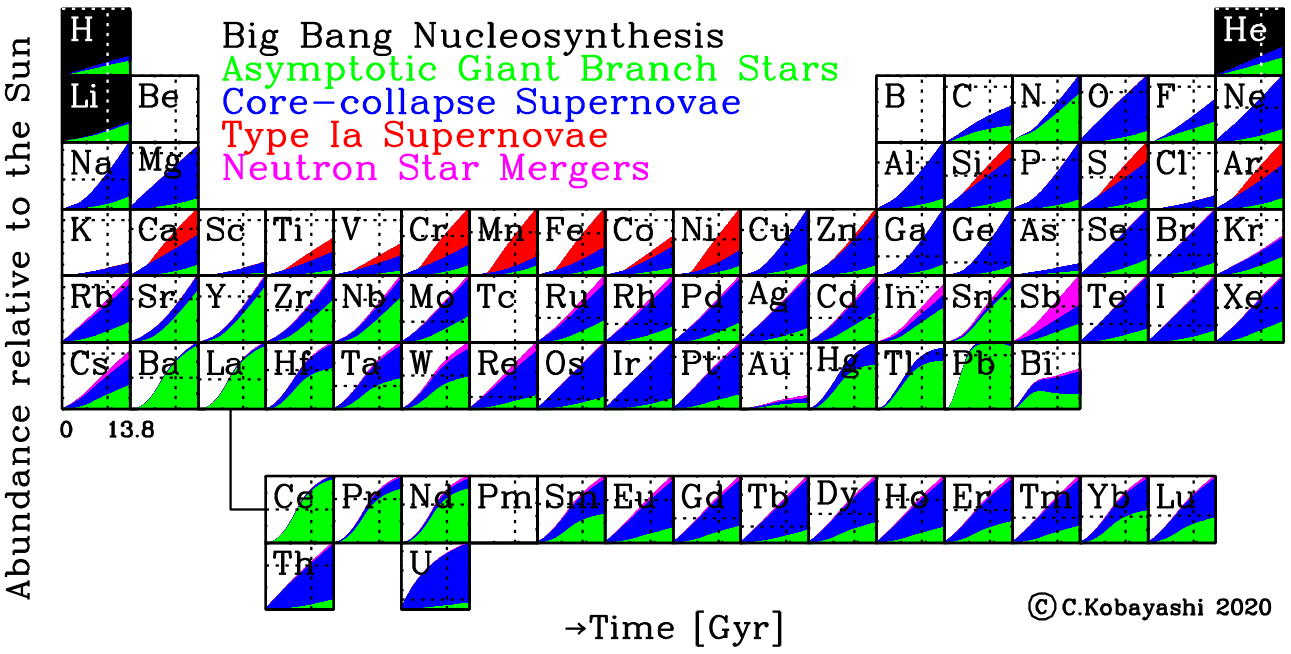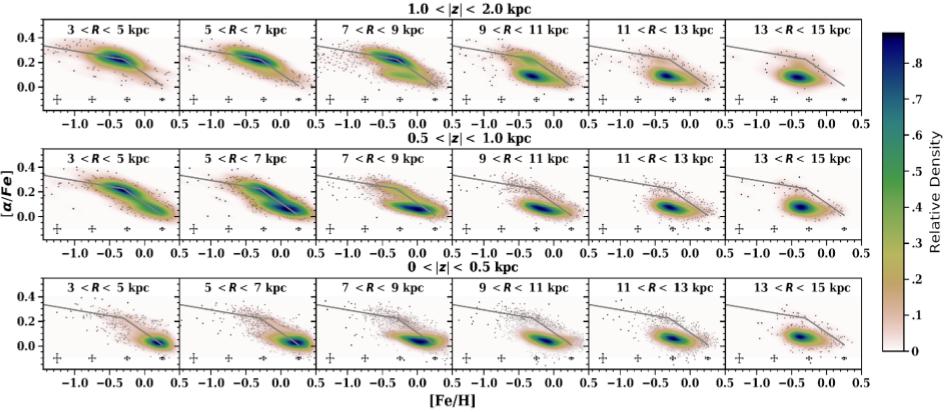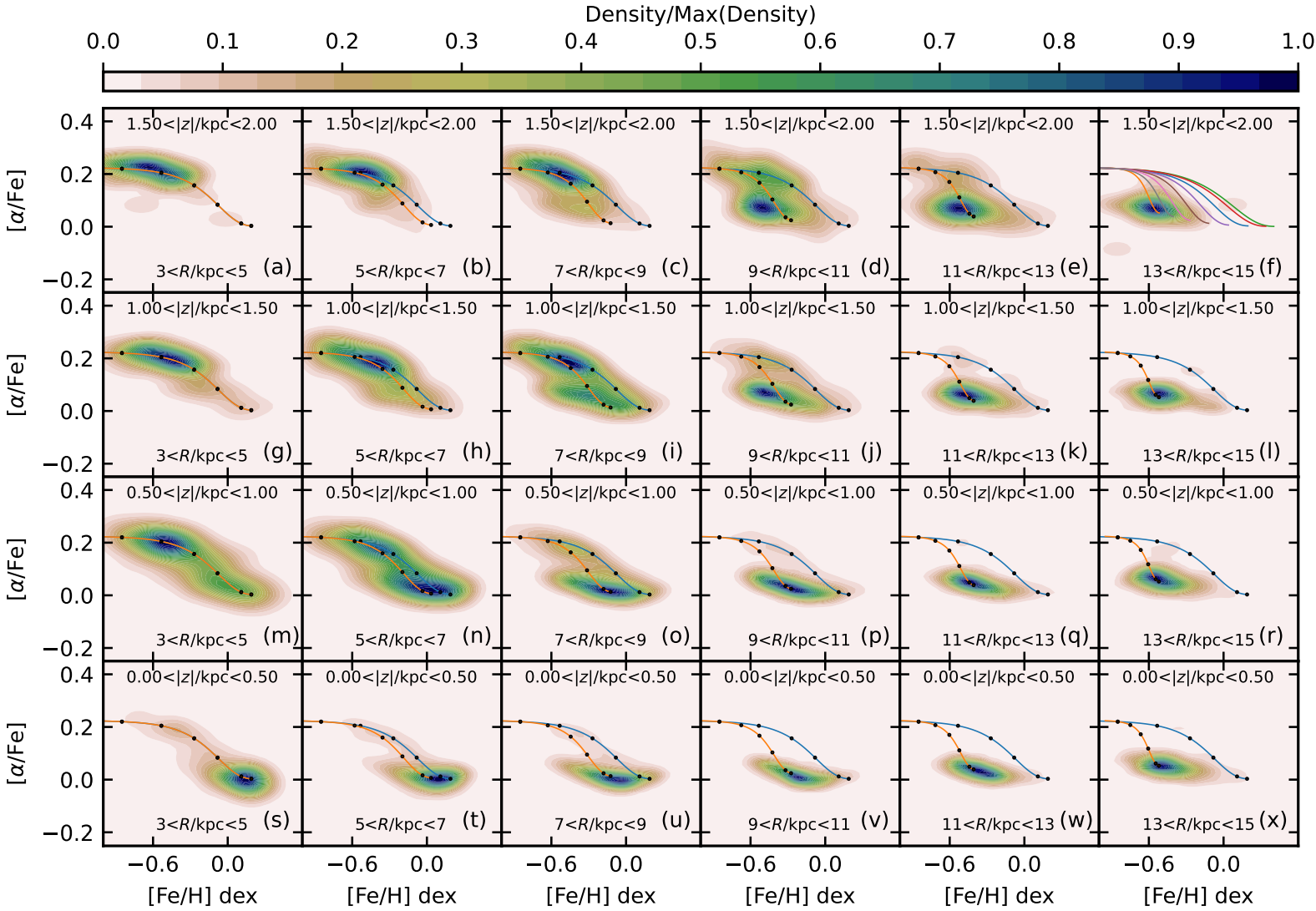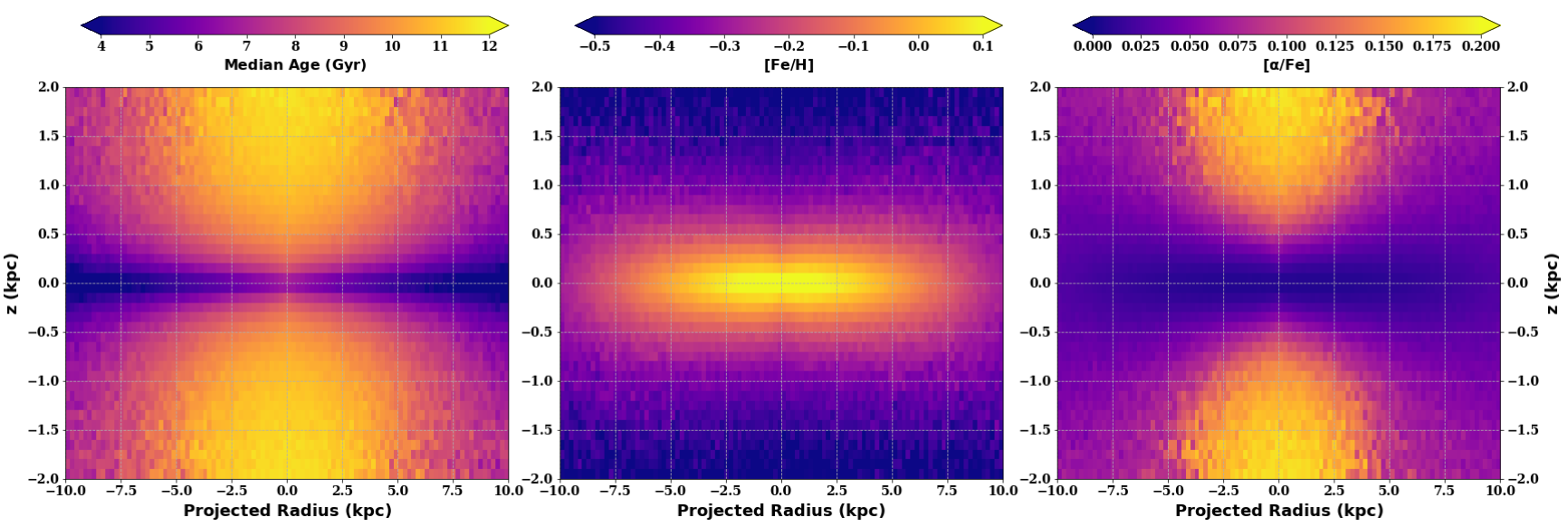Research
I work on galaxy evolution and Galactic Archaeology, which is the study of the structure, formation, and evolution of the Milky Way. I study the stars and stellar populations of the Galaxy. Stars contain the chemical imprint of the gas cloud from which they formed, acting as our fossil record of the Milky Way and allowing us to trace back the history of the Galaxy through time. I use large-scale spectroscopic surveys which take spectra of millions of stars throughout the Galaxy to map out its chemodynamic structure and model how the Galaxy has evolved to what we observe today.
Abundance ratios of different elements are key diagnostics to unravelling the history of the Galaxy. This is because different elements are produced from different sources: supernovae, merging neutron stars, and at the end of the life of solar type stars. All of these processes occur on different timescales, so measuring the abundance of different elements can allow us trace the history of the Galaxy even without an age estimate for a star. The origin of different elements (from Kobayashi bellw) is one of the fundamental properties of astrophysics and the origin of life in the Universe.

Mapping the Galaxy
I made the first complete map of the chemical structure of the disk, from the bulge out to the edge of the disk, comparing how the fraction of alpha elements and overall metallicity varies with location in the Galaxy. These kinds of studies allow us to understand how star formation has proceeded in the Milky Way, and how important different dynamical processes such as radial migration are important in redistributing stars throughout the Galaxy. We see that the chemical structure of the Galaxy varies strongly with location: the inner Galaxy is very metal-rich, but also has an older high alpha population that becomes dominant in the thick disk. These old high alpha stars disappear in the outer Galaxy, even above the plane. The thick disk in the outer Galaxy is made of up younger stellar populations!

I'm currently focused on estimating ages for as many stars as possible throughout the Galaxy. We have found that ages can be directly determined from a stars chemical abundances , allowing us to measure accurate ages for nearly every star observed in spectroscopic surveys. This will give us an unprecedented picture of not only the current structure of the Galaxy, but how it has changed with time.
Galaxy Modeling
In the coming decades, there will be a huge increase in the number of available stellar spectra. Interpreting this data will require advances not only in data analysis techniques to handle this large volume of observations, but also in detailed models of the Galaxy in order to understand these observations. I am leading several key projects on developing detailed chemical evolution models of the Milky Way that also include dynamics. Stars can move significant distances from where they were born, so it is important to include these dynamical processes in order to understand how the Milky Way has evolved with time. With my PhD student Boquan Chen, we have built the first chemodynamical model that is able to reproduce the entire chemical structure of the Galaxy, as well as match constraints like the large scatter in the age-metallicity relation.

The Milky Way in Context
One other aspect of my research is comparing the Milky Way to external galaxies and simulations. While we can observe individual stars in the Milky Way, which is often not possible in external galaxies, it is still only one Galaxy among countless others. It is important to place the Milky Way in the context of other galaxies to help inform our knowledge and understanding of galaxy evolution in general. I am working on several projects comparing the Milky Way to galaxies of similar mass with MUSE, attempting to map the chemical structure of other galactic disks in a similar manner to what I have done with the Milky Way. However, it is often difficult to compare studies of the Milky Way, which are based on observations of individual stars, to observations of external galaxies, which are often done in integrated light. These integrated light observations mix many stars and stellar populations together. To get around this issue, we have developed a code called Galcraft in order to turn out Milky Way models into synthetic integratd light observations. This enables a direct 1:1 comparison between the Milky Way and external galaxies with the same observables and analysis techniques for the first time. In the coming years, we we will have resolved observations for more than 50 Local Group galaxies from 4MOST, SDSSV, and JWST. I am working to build these syntethic IFU observations of each galaxy, enabling us to directly compare these galaxies to those observed with MUSE, SAMI, and MANGA.

I am one of the principal investigators for GECKOS, which is a large-ESO MUSE program to look at edge-on galaxies that are in similar in mass to the Milky Way. While similar in mass to our galaxy, they span a range of properties otherwise, including star formation rate and star formation history and morphology (barred vs. non-barred). With this sample, we can directly explore the key physical processes that lead to forming a Milky Way versus a starburst versus an S0 galaxy. Looking at edge-on systems also allows us to characterize the vertical structure of stellar populations, and we can search for the bimodal chemical disks that we observe in the Milky Way in this vertical structure.
